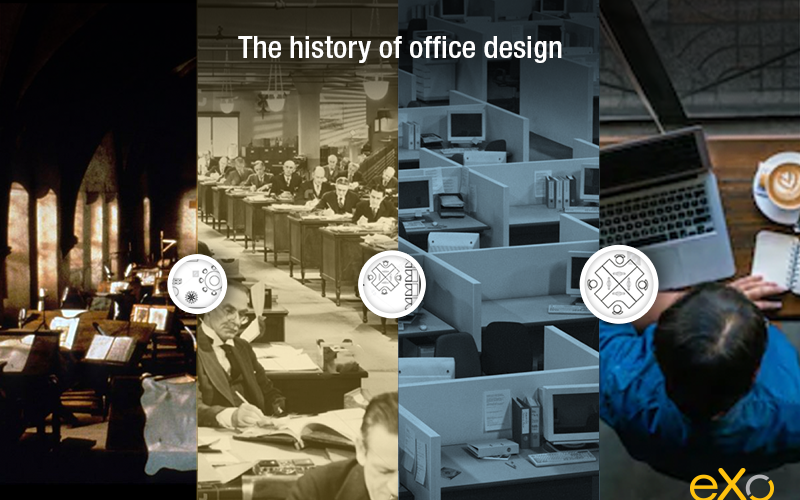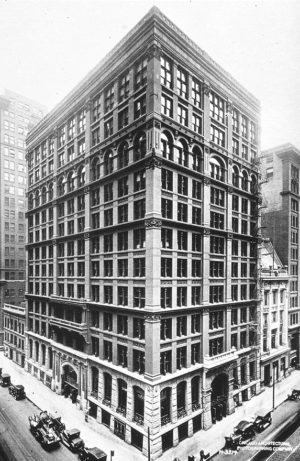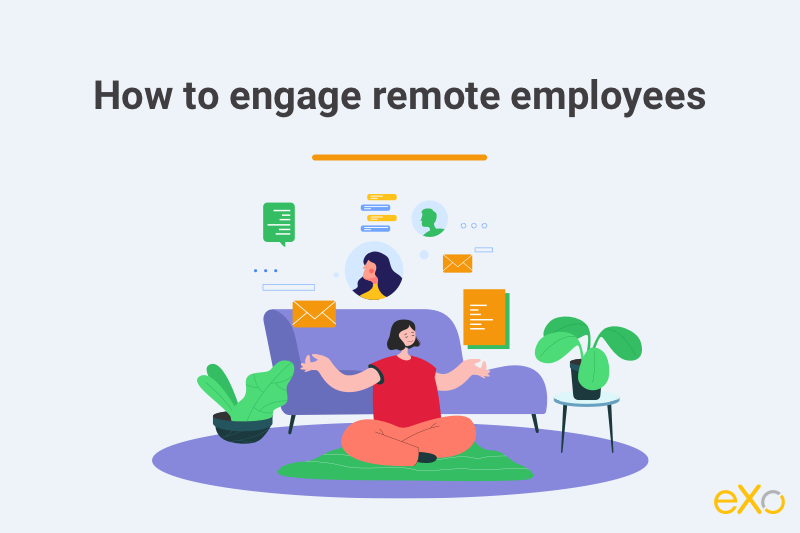- Fares Laroui
- January 8, 2020
The history of office design: from home offices to remote working
Have you ever wondered how many hours you spent at the office over the last year? Probably a lot. Add to that the additional hours spent getting to the office and back home again, and you soon realise that you probably spend half the day either working or commuting. Apply that to your lifetime and the results can be surprising or even depressing.
In fact, a number of studies found that over a lifetime, the average individual is expected to spend 90,000 hours – or a third of their lives – at work. This eventually makes the office feel like home, except it is not (yet).
Spending too much time at the office is proven to have a negative impact on your productivity, personal life and mental health. This gets even worse when you work in a poorly designed open space with noisy neighbours and virtually no privacy.

Content
But is it worth it? And does it always have to be this way? The answer is a resounding no for both questions. First, research studies show that there is no correlation between office hours and productivity.
Actually, the average US employee only works for less than three hours a day, with the remaining hours spent on non-related work activities like social media, news websites or even looking for another job. In fact, the loss in productivity coupled with the overwhelming stress experienced by employees have now led both business and governments to take decisive actions to tackle these issues and redefine the office as we know it.
From flexible work hours and additional holidays to cutting–edge technologies and innovative work designs, the possibilities for making the work experience better and the office a pleasurable place to be at are endless.
In this blog post, we will go back on a brief history of the office and how the surge of new technologies and the generational shift are impacting the office.
1. Where did it all begin?
To understand the nature of the physical office, we have to go back to the medieval ages. Back then, office homes were the norm. Individuals whose jobs consisted of paperwork, bookkeeping and other office-like activities tended to work from home.
However, common working areas and offices were used primarily by governments and religious institutions during that period. Famous paintings like Botticelli’s Saint Augustine in His Cell and Saint Matthew set in a medieval scriptorium offer us a glimpse into what medieval offices looked like. They represented quiet and private work stations for monks to write, copy and study manuscripts.


The old admiralty office, London (built in 1726)
These circumstances obviously brought the office back into the public eye as the need for dedicated common working areas became greater. This period also marked the first distinction between the office, as a place to work, and home, as a place to live.
Fast forward to the late nineteenth century and beginning of the twentieth century, and communication technologies like the telegraph and the rapid expansion of the railroad industry meant that the while-collar workforce surpassed the blue-collar workforce. This led to a boom in demand for office space and the birth of skyscrapers.

FREE WHITE PAPER
Types of Digital workplace solutions
The modern workplace has evolved significantly in recent years, with advancements in technology, the growing number of tools …

The Home Insurance Building, Chicago
The popularity and widespread growth of office spaces was met by a growing interest in office design and management science. Offices of the early twentieth century were based on a scientific style of management known as “Taylorism”, a management principle created by Frank Taylor.
Taylor’s ideas were primarily focused on improving efficiency and overall productivity, with no particular focus on employee wellbeing and engagement. Offices at the time reassembled factories with packed offices and limited privacy. This factory-like office appealed to most big corporations and governmental agencies at the time owing to its ability to improve productivity while all the time reducing costs.
Office design ideas and principles continued to emerge as a consequence of the rapid technological advancements and the need for more effective designs. The 1960s Bürolandschaft or “office landscape” was designed to encourage information sharing, improve communication and give employees more privacy. The feel and experience of earlier offices were ditched in favour of a more fluid and organic layout with more spaces and room for communication and spontaneous interactions.
The Bürolandschaft The Action Office
The action office soon followed. The design, created by Robert Propst, had the same promise as the “office landscape” – an open office with more freedom and room for communication, collaboration and creativity.
Both designs differ however: the action office came with different workstations for performing specific tasks and custom-built furniture to create some sort of a cubicle to ensure privacy and reduce noise.
Both designs put employees at the heart of the workplace and acted as the forerunner for the offices we know today. But they were expensive, which means that cheaper versions copied both concepts, or at least the facade, and went viral throughout the ‘80s and ‘90s. But it is safe to say these cheaper generic versions did not live up to expectations as it has been reported that people find it difficult to concentrate in such offices, with no private space and in some cases limited ability to collaborate.You may like:
2. The rise of remote working
History tells us that office design is often influenced by cultural, economic and technological factors. The way we work has significantly changed in recent years. The emergence of mobile devices and advnaces in telecommunications and wireless tech like 3G and 4G networks has meant that work can be done anytime, anywhere. Adding to that, the “gig economy” started to gain momentum since the 2008 financial crisis, full-time jobs were difficult to find, and companies looked for cheaper alternatives to get things done.
These changes, coupled with a generational shift in the workplace with a tech-savvy workforce (millennials and Gen Z), have contributed to the rise of remote working. To cope with these changes, businesses started adopting flexible working hours and allowing their employees to work remotely.
In fact, some companies, especially in the tech world – like Atlassian, GitHub and Basecamp – have a majority remote workforce. This was made possible thanks to the variety of enterprise software solutions that existed.
From digital workplace solutions to business-specific platforms like knowledge management systems, enterprise social networks and ChatOps, employees now have a multitude of ways to communicate, collaborate and get things done.
Whether from the comfort of their homes, the nearest coffee shop or on the road, employees are always kept up to date with the latest company news and are able to work as if they were in their office.
But where does (all) this leave the office?’
Less office space
A more intimate place that reassembles home
“If you’re at home in a second bedroom or no one’s around during the day, you’re not distracted. You’re in an environment you can control for the most part and you work in isolation and get into deep work and [aren’t] bothered by other people. We wanted to create an office space to simulate the advantages of that, but also give an opportunity for people to get together in a sound-controlled environment.”

An intelligent office
- Tags: Future of work, Remote work
Related posts
- All
- eXo
- Digital workplace
- Employee engagement
- Open source
- Future of work
- Internal communication
- Collaboration
- News
- intranet
- workplace
- Knowledge management
- Employee experience
- Employee productivity
- onboarding
- Employee recognition
- Change management
- Cartoon
- Digital transformation
- Infographic
- Remote work
- Industry trends
- Product News
- Thought leadership
- Tips & Tricks
- Tutorial
- Uncategorized
Leave a Reply
( Your e-mail address will not be published)


